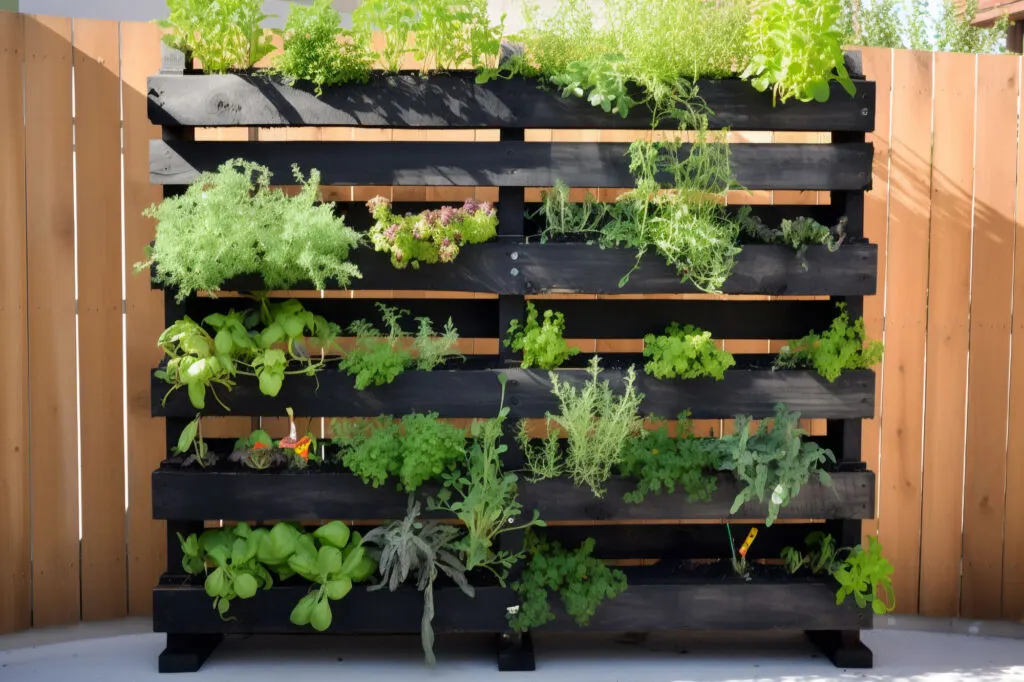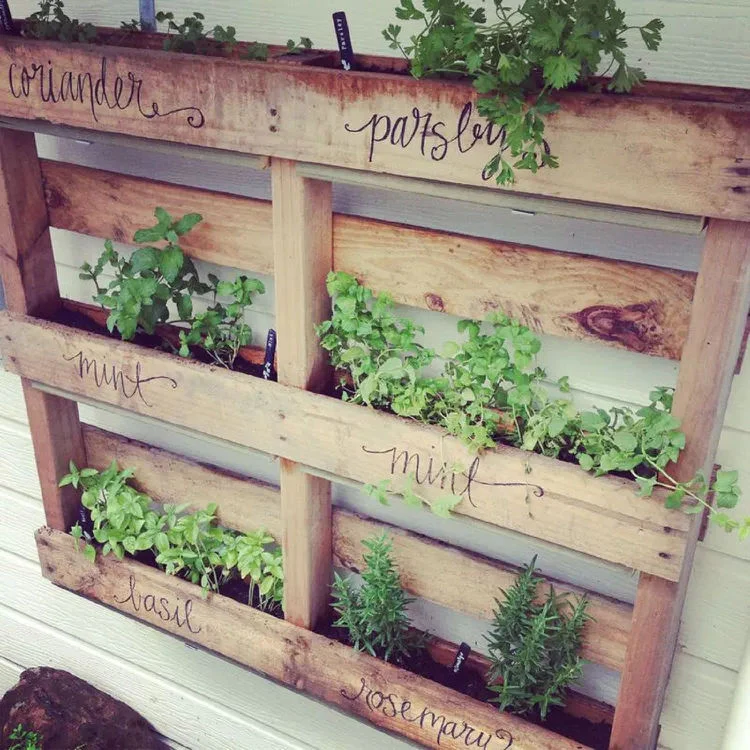By Benedict Vanheems, 15 April 2023
This DIY herb pallet planter is a fantastic way to grow fresh herbs right at home, all while saving space and money. By using repurposed wooden pallets, you can create a vertical herb garden that keeps your favorite plants within easy reach and adds a rustic charm to your outdoor space. Here’s how you can make your own herb pallet planter!
Where to Find Pallets
Pallets can be easily sourced from local businesses or neighbors who are renovating. Often, people are happy to get rid of them, so ask around! You can also check with hardware stores, builders’ merchants, or even put out a call on social media. When choosing pallets, ensure they are heat-treated (indicated by a stamp with “HT”), which makes them safe for planting. Avoid pallets marked with “MB,” as they may have been treated with harmful pesticides.
Preparing the Pallet
- Modify the Pallet for Planting
Place the pallet on its edge, ensuring the slats are positioned vertically. To give your herbs more room to grow, remove some of the boards from the pallet. This can be done by striking the back with a hammer to loosen the nails, then reattaching the boards to create deeper planting pockets—ideal for healthy root growth.

- Paint for Protection and Aesthetic
After modifying the pallet, it’s a good idea to paint it with a non-toxic, weatherproof wood stain to protect it from the elements and enhance its appearance. Make sure to cover all surfaces, including any nooks and crannies, for a long-lasting finish. - Add Chalkboard Labels
For easy identification of your herbs, apply chalkboard paint to small panels on the pallet. Use masking tape to define the area and apply multiple coats for a vibrant finish. This will allow you to label each herb and change the names as needed.
Adding Planting Pockets
To prevent soil from falling through, you’ll need to line the planting pockets. While you can use extra boards, landscape fabric is a simpler option. It’s durable, permeable, and allows excess moisture to drain out. Cut the fabric to size and secure it with a staple gun or small nails. Ensure the fabric is taut and neatly folded at the edges to prevent fraying.
Planting Your Herbs
Now, it’s time to plant! You can start with herbs from your local garden center, grocery store, or even from seeds or cuttings. Parsley and mint are easy to grow, while Mediterranean herbs like rosemary, thyme, and sage thrive in well-draining soil. Group herbs with similar growing needs together in each pocket for the best results.
- Leafy herbs like parsley and cilantro prefer a rich, all-purpose potting mix.
- Mediterranean herbs like rosemary, thyme, and sage need a free-draining mix, so add perlite or grit to the potting soil for better drainage.
Maintaining Your Herb Pallet
Place your herb planter in a sunny spot to encourage healthy growth and potent aromas. Make sure to water regularly, but avoid overwatering, especially for herbs like rosemary. Over time, you can replace plants as needed, and the chalkboard labels can be wiped clean to write new names.
Maintaining Your Herb Pallet
Place your herb planter in a sunny spot to encourage healthy growth and potent aromas. Make sure to water regularly, but avoid overwatering, especially for herbs like rosemary. Over time, you can replace plants as needed, and the chalkboard labels can be wiped clean to write new names.

Final Thoughts
This pallet herb garden is a low-cost, space-saving project that not only brings fresh herbs to your doorstep but also adds a charming touch to your outdoor space. Whether you’re a beginner or an experienced gardener, this project is simple, sustainable, and incredibly rewarding. Happy planting!
